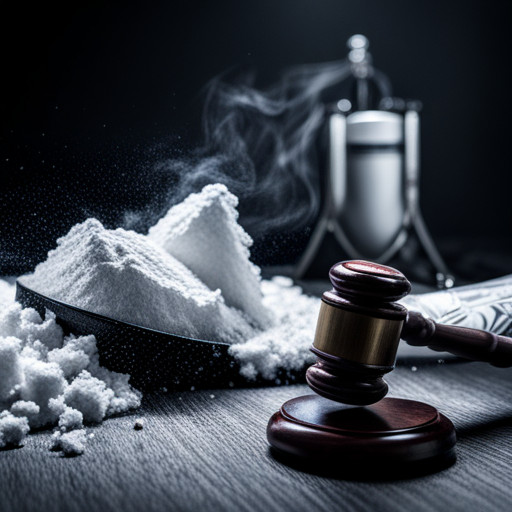Lawsuits and Bankruptcy Updates on JJ Talcum Powder
This article critically examines the ongoing legal challenges faced by Johnson & Johnson (J&J) due to its talcum powder lawsuits.

It provides updates on J&J's bankruptcy proceedings, analyses trial strategies and verdicts, evaluates the proposed global settlement, and assesses the impact on J&J's financial health.
Furthermore, it explores public perception and the potential future outlook for J&J amidst these developments.
Key Takeaways
- J&J's second and third bankruptcy filings for its talc subsidiary were dismissed by a New Jersey bankruptcy judge.
- Plaintiff attorneys are pushing for nationwide trials after the denial of J&J's second talc-related bankruptcy claim.
- J&J is assessing other legal options to address the thousands of cancer claims linked to its talc-based products.
- The $8.9 billion settlement offer proposed by J&J for talcum powder lawsuits is seen by plaintiffs as a lowball offer for nearly 38,000 claims.
The Latest on J&J's Lawsuit Updates and Bankruptcy Proceedings

Recent updates in the legal challenges faced by Johnson & Johnson indicate a push for reargument of expert witness challenges, dismissal of multiple bankruptcy filings, and an increase in talc powder lawsuits, contributing to a complex and evolving legal landscape.
The company's desire to reargue expert witness challenges, previously decided by the MDL judge, further complicates the nationwide trials.
The dismissal of the firm's second talc-related bankruptcy claim has heightened plaintiff attorneys' push for nationwide trials.
The legal landscape is further compounded by the increase in talc powder lawsuits, with approximately 37,700 cases in MDL 2738, ranking as the second-largest MDL in the country.
Despite the dismissal of successive bankruptcy filings, Johnson & Johnson and its talc subsidiary are not barred from attempting a third bankruptcy filing.
Trial Strategies, Verdicts, and Their Consequences

In the realm of trial strategies and verdicts, plaintiff attorneys have put forth a proposal to consolidate multiple cases, a move which Johnson & Johnson opposes, citing a previous verdict that was reduced on appeal. The negotiation of settlements has emerged as a critical aspect of these proceedings. The consequences of verdicts, particularly those in favor of the plaintiffs, have significant implications for the company's financial and reputational standing.
| Trial Strategy | Verdict Consequence | Settlement Negotiation |
|---|---|---|
| Consolidation of cases | Financial implications | Critical role in proceedings |
| Opposition by Johnson & Johnson | Reputational repercussions | Affected by verdict outcomes |
| Based on previous verdict outcomes | Influence future litigation strategies | Potential resolution to litigation |
The opposing stances of plaintiff attorneys and Johnson & Johnson on case consolidation underscore the complexities inherent in these legal proceedings. The outcomes of verdicts and the negotiation of settlements will continue to shape the trajectory of the ongoing litigation.
Evaluating the Global Settlement Proposal

Evaluating the global settlement proposal reveals that Johnson & Johnson has offered $8.9 billion to resolve talcum powder lawsuits. However, this figure is viewed by many plaintiffs as insufficient compensation for nearly 38,000 pending claims. This proposal's adequacy is questioned, particularly when juxtaposed with individual verdicts such as the $18.8 million awarded in a California trial.
The impact on victims' compensation can be highlighted through the following points:
1. The proposed amount averages to a considerably low sum per claimant.
2. The significant number of claims may result in protracted distribution of the settlement.
3. The settlement does not adequately account for the severity and diversity of health impacts suffered by the plaintiffs.
4. The proposal overlooks the punitive damages typically awarded in individual verdicts.
The Financial Impact on J&J and Industry Response

Financial implications for the company and its industry have been significantly shaped by the ongoing litigation and associated settlement proposals. The robust wave of lawsuits has not only resulted in high defense costs for Johnson & Johnson (J&J) but also precipitated financial distress within the broader talc industry. Certain suppliers, such as Whittaker, Clark & Daniels, have filed for bankruptcy, underscoring the industry-wide impact.
Furthermore, the proposed $8.9 billion settlement, if accepted, would exert substantial financial pressure on J&J. The industry is grappling with uncertainty, with the outcomes of the bankruptcy cases and potential settlements having far-reaching financial implications.
These factors together contribute to a climate of industry distress and underscore the financial stakes associated with the ongoing litigation.
Public Perception and Future Outlook for J&J

Public sentiment and the long-term prognosis for Johnson & Johnson seem deeply influenced by the company's ongoing litigation and settlement offers. This multifaceted issue has numerous potential legal ramifications, and the company's approach could significantly impact consumer trust and brand reputation.
1. Negative Publicity: The company's repeated bankruptcy filings and lowball settlement offers have generated negative publicity, potentially damaging the company's reputation.
2. Legal Precedent: The dismissals of the bankruptcy filings set a legal precedent, potentially discouraging similar tactics in the future.
3. Financial Implications: The outcomes of the litigation could have significant financial implications for Johnson & Johnson.
4. Consumer Confidence: The ongoing legal battles may erode consumer trust in the company, affecting future business prospects.
Frequently Asked Questions
What Are the Main Health Concerns Associated With J&J's Talcum Powder That Led to the Lawsuits?
The primary health concerns associated with J&J's talcum powder, leading to numerous lawsuits, revolve around allegations that prolonged exposure and use could potentially cause ovarian cancer and mesothelioma. The presence of asbestos, a known carcinogen, in the talcum powder has been a central issue.
These health concerns have significantly influenced talcum regulation policies and have had a substantial impact on consumer trust in the company and its products.
How Did J&J Respond to Initial Allegations About the Harmful Effects of Its Talcum Powder Products?
In response to initial allegations concerning the detrimental health effects of its talcum powder products, Johnson & Johnson displayed a multifaceted approach of corporate responsibility and crisis management.
The company rigorously defended the safety of its products while simultaneously exploring legal avenues such as bankruptcy filings.
Despite these efforts, an increasing number of lawsuits and mounting evidence of potential health risks have continued to challenge the firm's crisis management strategies.
What Kind of Evidence Have Plaintiffs Presented to Support Their Claims in the Talc Lawsuits?
In the talc lawsuits, plaintiffs have presented various types of evidence to substantiate their claims. These include scientific studies linking talc to cancer, internal company documents suggesting knowledge of potential risks, and personal testimonies recounting the use of talc products and subsequent health issues.
Legal strategies employed encompass the consolidation of lawsuits and the use of expert witnesses to establish causation.
These evidentiary components serve as the foundation of the plaintiff's case in these ongoing legal proceedings.
Are There Any Ongoing Scientific Research or Studies on the Health Effects of Talcum Powder?
Ongoing scientific research continues to investigate the potential health effects of talcum powder. These investigations are integral to the ongoing discourse surrounding talcum powder regulation.
Concurrently, studies are exploring talcum powder alternatives, with a focus on identifying materials that can provide similar benefits without the associated health risks.
This dual approach to research aims to ensure consumer safety while maintaining the functionality of products historically reliant on talcum powder.
How Does J&J's Talcum Powder Controversy Affect Other Products in Their Portfolio?
The controversy surrounding Johnson & Johnson's talcum powder has potential repercussions on their broader product portfolio.
The negative publicity could influence consumer perception and trust, impacting product branding and market position.
Moreover, financial resources directed towards litigation and settlements may limit investment in other product lines.
While exact implications are uncertain and depend on various factors, the controversy undeniably poses a significant challenge to J&J's overall brand image and market stability.

This post has been generated by AI and was not reviewed by editors. This is Not legal advice. Please consult with an attorney.




